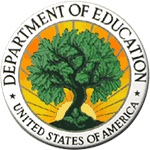Jenny Hong
Staff Writer
Learning doesn’t ever stop, and the adult literacy program offered at all six of the Santa Barbara public libraries facilitates that. The program provides adults with tutors who can help them with reading, writing, spelling, math, job skills, life skills, GED preparation, citizenship preparation, and general knowledge to help adults help their children with homework. This state-funded program was created 25 years ago and was actually developed from a separate literacy program group which had been doing this work for years before the libraries adopted the program.
“The purpose is to offer confidential, free one-to-one tutoring,” said Beverly Schwartzberg, the adult literacy coordinator. “We work with a lot of individuals who might not thrive in a classroom setting, or have particular questions. Sometimes there are people who move too fast for the classroom or sometimes, there are people for whom the classroom moves too quickly. I can’t generalize about the adults we serve as we look at their individual needs.”
In order to be a tutee, adults need to be at least 16 years old, live or work locally, be able to work with a tutor for a few hours every week, be willing to commit to three months of getting tutored, and need help with basic skills, GED preparation, and citizenship preparation. This means that, unfortunately, students who are currently attending an institution like UCSB cannot receive free help from this program. Nevertheless, this does not mean that UCSB students cannot be a part of the program, and certainly does not stop UCSB students from joining. Many become involved not as tutees, but as tutors.
Qualifications of tutors include having the ability to read and write on a high school level; being at least 18 years old; completing a 9-hour tutor training session; and having patience, flexibility, creativity, and most importantly, commitment. Although the requirements to become a tutor may seem very stringent, these are the reasons that the program is so successful. Therefore, this program is another great opportunity for UCSB Gauchos to serve their community.
“If [UCSB students] have time, I think it’s wonderful if they’re able to commit to a regular tutoring schedule. Our volunteers need a structured schedule. [Learners] need to know that if a tutor is going to come on a Monday at 3 o’clock, that the tutor is going to turn up, and that there isn’t going to be a change in the UCSB schedule,” said Jane Swain, a co-coordinator for this program as well as a long-time tutor.
Some benefits of helping out as tutors include gaining the ability to develop your own teaching methods and gain experience in the teaching field, getting deeper knowledge and understanding of the materials being taught, and, most importantly, being able to impact other people’s lives in positive ways. Tutoring has been important in helping teenage dropouts attain their GED credentials, boosting their resumes and their chances in the competitive job market. Parents have also been positively impacted, as it has taught them the tools they need to be academically supportive of their children at home.
Swain attests to the fact that tutors gain just as much as learners gain from their services. She’s always reminded by her students how beneficial it is to serve her community, and she remembers with fondness how she has been able to help the people she served though the program.
“I know a story of one man who was learning to read and he had never been able to read road signs before and yet he was driving, and he came to the sign ‘State Street’…for the very first time. He was able to read ‘State Street,’ and he was so excited [that] he started honking his horn on his truck,” said Swain.
UCSB students can join Swain and the adult literacy program for their mission statement to help their community thrive with intellectual skills. Students can contact Beverly Schwartzberg, the literacy program coordinator at 805-564-5619 for more information on tutoring and the training course.
Photo courtesy of www.ed.gov











